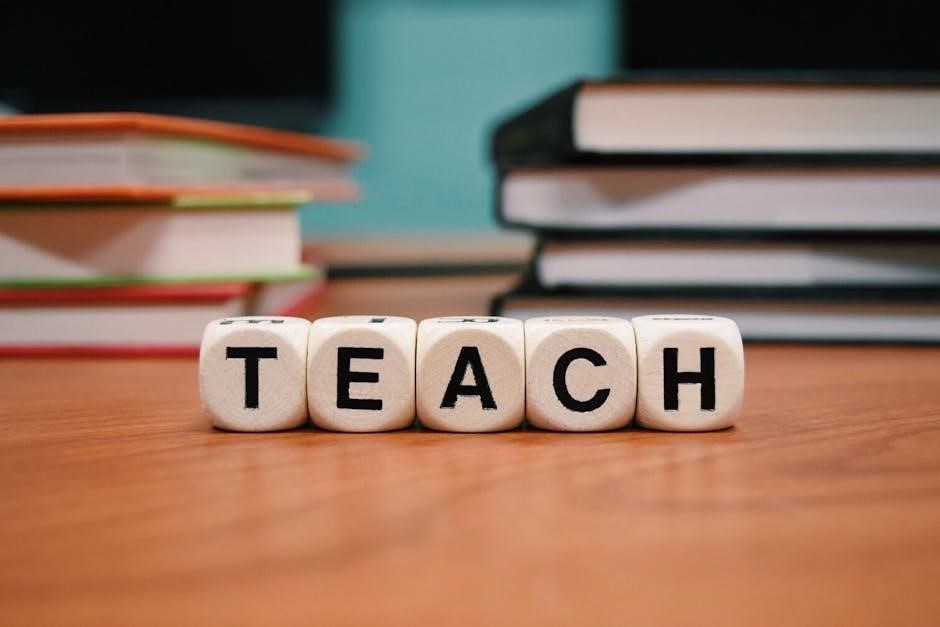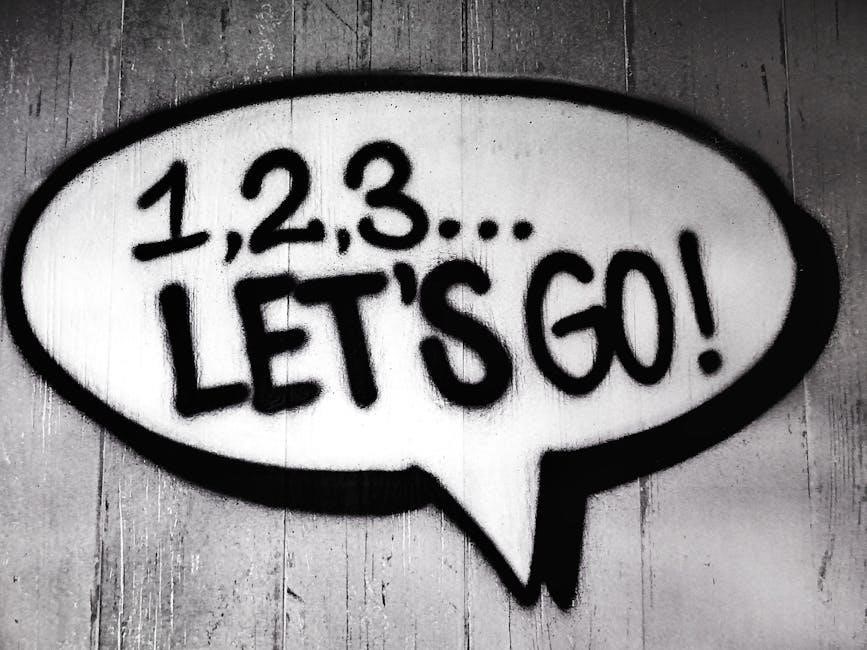Sight words are high-frequency words that students recognize instantly, enhancing reading fluency. Third-grade sight words, including Dolch and Fry lists, are essential for early literacy development and are often provided in free printable PDF resources for easy practice and memorization.
What Are Sight Words?
Sight words are high-frequency words that appear commonly in texts and are recognized by sight rather than decoded. They are essential for fluent reading and often do not follow phonetic rules. These words are grouped into lists, such as Dolch and Fry, to help students memorize them. Sight words are not necessarily phonetic and are meant to be learned by repetition and practice. For third grade, the Dolch list includes words like “about,” “better,” and “carry,” while Fry’s list covers words like “high,” “every,” and “near.” Printable PDF resources are widely available to support their learning and mastery.
Importance of Sight Words in Reading Development
Sight words play a crucial role in reading development by enabling students to read fluently and with confidence. Recognizing these high-frequency words instantly reduces the need to decode, allowing focus on comprehension. For third graders, mastering sight words enhances reading accuracy and speed, which are foundational skills for tackling more complex texts. Additionally, sight words are often used in everyday reading materials, making them indispensable for building a strong literacy base. Printable PDF resources, such as those based on the Dolch and Fry lists, provide structured practice, helping students achieve proficiency and become more independent readers;
How Sight Words Differ from Other Vocabulary
Sight words are distinct from other vocabulary because they are high-frequency words that often don’t follow phonetic rules, making them harder to decode. Unlike other words, sight words are recognized by sight rather than sounded out, which is why they are taught as exceptions to the rule. They are not typically learned through context or phonics but are instead memorized for instant recognition. This contrasts with other vocabulary, which is often acquired through meaning or pronunciation patterns. Sight words are also irregular, meaning they don’t conform to spelling or pronunciation norms, setting them apart from most other words students encounter.

The Dolch Sight Word List for Third Grade
The Dolch Sight Word List for third grade includes 41 high-frequency words essential for fluent reading. These words, identified by Dr. Edward Dolch, are foundational for early literacy and are included in the third grade sight words PDF resources to aid memorization and practice.
Who Was Dr. Edward William Dolch?
Dr. Edward William Dolch was a prominent American educator and researcher in the field of literacy education during the early 20th century. He is best known for his groundbreaking work in identifying high-frequency sight words that are essential for fluent reading. Dolch’s research, published in 1948, focused on words that appear most frequently in children’s books but often do not follow phonetic rules, making them difficult to sound out. His lists of sight words have become a cornerstone of reading instruction, widely used in classrooms and resources like third-grade sight words PDFs to help students build foundational reading skills.
History of the Dolch Sight Word Lists
The Dolch Sight Word Lists were created in the 1940s by Dr. Edward William Dolch, an educator who analyzed children’s books to identify high-frequency words. He categorized these words by grade level, recognizing that mastering them was crucial for reading fluency. Dolch’s lists were revolutionary, as they focused on words that do not always follow phonetic rules, making them essential for sight recognition. Over time, the lists have been widely adopted in education and remain a foundational tool for teaching reading. Today, they are often included in third-grade sight words PDFs, helping educators and parents guide students in building strong reading skills.
Complete List of Third Grade Dolch Sight Words
The third-grade Dolch Sight Words list includes 41 high-frequency words essential for reading fluency; Examples of these words are: about, again, always, around, because, been, being, below, would, and could. These words are selected based on their common appearance in children’s reading materials and are often irregular, meaning they don’t follow standard phonetic rules. Mastering these words helps students recognize them instantly, improving their reading speed and comprehension. The complete list is widely available in third-grade sight words PDFs, making it easy for teachers and parents to create practice materials. Regular practice with these words is key to building strong reading skills.
Key Characteristics of Dolch Sight Words
Dolch Sight Words are high-frequency words that appear regularly in reading materials, making them essential for fluent reading. Many of these words are irregular, meaning they don’t follow standard phonetic rules, and must be memorized rather than sounded out. They often include prepositions, conjunctions, and pronouns that are fundamental to sentence structure. These words are selected based on their frequency in children’s literature, ensuring they are relevant to early reading development. Mastery of Dolch Sight Words enables students to recognize them instantly, boosting reading speed and comprehension. Their unique characteristics make them a cornerstone of foundational reading skills.

Fry Sight Words for Third Grade
Fry Sight Words are high-frequency words organized by grade levels, with third grade covering words 201-300. They are crucial for reading fluency and are often irregular.
Overview of the Fry Sight Word List
The Fry Sight Word List categorizes high-frequency words by grade levels, with third grade covering words 201-300. Developed by Dr. Edward Fry, this list identifies words that appear most frequently in reading materials, helping students recognize them instantly. These words are often irregular and don’t follow phonetic rules, making them essential for sight recognition. The list is a valuable tool for teachers and parents, as mastering these words improves reading fluency and comprehension. Third-grade sight words PDFs often include these lists, offering a structured way to practice and reinforce learning. Regular practice with Fry words enhances overall reading proficiency.
Third Grade Fry Sight Words (201-300)
The Fry Sight Word List for third grade includes words numbered 201 to 300, focusing on high-frequency words essential for fluent reading. These words are selected based on their common appearance in texts and are grouped by difficulty. Examples of words in this range include about, again, always, around, because, been, being, below, could, every, and would. Mastering these words helps students read with greater speed and accuracy. The list is widely used in schools and is often provided in third grade sight words PDF formats for easy practice and review. Regular practice with these words enhances reading proficiency and confidence.
Differences Between Dolch and Fry Sight Words
The Dolch and Fry sight word lists differ in their approach to identifying high-frequency words. Dolch’s list, created by Edward William Dolch, is organized by grade level, with specific words tailored for each grade, including third grade. These words are often taken from basal readers and include some nouns. In contrast, Fry’s list, developed by Edward Fry, categorizes words into 1,000 levels based on frequency across various texts, making it less grade-specific. Fry’s list for third grade includes words 201-300, focusing on function words. Dolch’s list has remained largely unchanged, while Fry’s may have been updated. Both lists are valuable but serve different educational strategies, with Dolch offering grade-specific tracking and Fry providing a broader lexical approach.

Third Grade Sight Words PDF Resources
Third grade sight words PDFs offer printable lists, flashcards, and activity sheets. These resources are free, downloadable, and organized by grade level for easy access. They help students memorize high-frequency words, improving reading fluency and comprehension through repetitive practice and engaging exercises.
Free Printable Third Grade Sight Words PDF
Free printable third grade sight words PDFs are widely available online, offering convenient resources for teachers and parents. These PDFs typically include lists of high-frequency words, flashcards, and activity sheets tailored for third-grade students. They are organized by grade level and often feature large, readable fonts for easy visibility. Many PDFs are designed to be interactive, with exercises that help students practice recognition, spelling, and usage of sight words. These resources are ideal for classroom use, homeschooling, or independent study, providing a structured approach to mastering essential sight words and improving reading fluency in a fun and engaging way.
How to Use Sight Words PDFs Effectively
To maximize the benefits of third-grade sight words PDFs, incorporate them into daily practice through interactive and engaging methods. Use flashcards for quick recognition drills, or print and laminate them for durable use. Create interactive games like bingo or matching activities to make learning fun. Integrate the words into sentences or short stories to build context and meaning. For digital learners, upload the PDFs to tablets or interactive whiteboards for touchscreen practice. Consistency is key, so establish a routine for review and gradually introduce new words. Track progress and celebrate milestones to keep students motivated and confident in their learning journey.
Best Sources for Third Grade Sight Words PDFs
High-quality third-grade sight words PDFs are available from reputable educational websites and resources. Teachers Pay Teachers (TpT) offers a wide variety of free and paid sight word resources, including flashcards and worksheets. Education.com and SightWords.com provide comprehensive lists and activities tailored for third graders. Additionally, many school districts and educational blogs share free downloadable PDFs. OpenEducationResources.org is another excellent source for open-access materials. When searching, use keywords like “third-grade sight words PDF” or “Dolch sight words list” to find relevant resources. These sources ensure you access high-quality, printable materials to support effective sight word learning.

Teaching Strategies for Sight Words
Effective sight word instruction involves multi-sensory approaches, repetition, and interactive activities. Use flashcards, games, and incorporating words into sentences to enhance recognition and reading fluency in students.
Flashcard Methods for Sight Word Practice
Flashcards are a proven tool for sight word practice, offering a visual and interactive way to build recognition. Start with high-frequency words, using large, bold text on plain backgrounds. Implement flashcard races, where students identify words quickly, fostering speed and accuracy. Pair words with images or actions for kinesthetic learners. Create matching games or memory pairs to engage students. Use flashcards in small groups or one-on-one settings for personalized practice. Rotate cards regularly to reinforce retention and gradually introduce new words. Track progress with checklists to celebrate milestones. Incorporate movement, like jumping or clapping, to make practice dynamic and fun.
Interactive Games for Sight Word Recognition
Interactive games make sight word practice engaging and effective. One popular activity is the “Sight Word Scavenger Hunt,” where students search for words in their environment. Another is “Sight Word Bingo,” combining auditory and visual learning. Digital tools like apps or online games offer interactive drills, while “Sight Word Memory Match” enhances concentration. Incorporate movement with “Sight Word Tag” or “Hop on the Word.” Group games like “Sight Word Relay” foster teamwork. These activities make learning dynamic, catering to visual, auditory, and kinesthetic learners. Regular play builds confidence and fluency, ensuring students master third-grade sight words effortlessly and enjoyably. Consistency is key to long-term retention.
Using Sight Words in Sentences
Using sight words in sentences is an effective way to help students understand their meaning and usage in context. Teachers can create simple sentences using sight words, ensuring they are relevant and relatable. For example, “The cat sat on the mat” uses multiple sight words. Students can also write their own sentences, reinforcing spelling and grammar. This method helps students connect sight words to real-life scenarios, improving comprehension. Additionally, reading sentences aloud boosts fluency and confidence. Sight word sentences can be incorporated into worksheets or interactive activities, making practice both educational and engaging. This approach aids in long-term retention and practical application.
Technology Tools for Sight Word Learning
Technology offers engaging and interactive ways to practice sight words. Educational apps like Sight Words Pro and Reading Bear provide interactive games and exercises. Websites such as ABCya! and Starfall offer digital flashcards, puzzles, and activities. Additionally, tools like Kahoot! allow teachers to create sight word quizzes for classroom use. These platforms make learning sight words fun and accessible, catering to different learning styles. Many apps also track progress, helping students and parents monitor improvement. Digital tools enhance traditional methods, providing a modern and motivating way to master third-grade sight words effectively.

Spelling and Sight Words
Spelling practice strengthens sight word recognition, as many sight words don’t follow phonetic rules. Regular practice reinforces memory and improves reading fluency naturally over time.
Spelling Practice for Sight Words
Spelling practice for sight words is essential for third-grade students, as it reinforces recognition and retention. Using PDF resources, students can engage in activities like tracing, writing, and matching games.
Techniques such as writing sight words in sand or shaving cream add a tactile element, enhancing memory.
Integrating spelling practice with sight word flashcards or apps fosters a deeper connection.
Consistency is key, as regular practice builds confidence and fluency.
Combining spelling with sentence writing helps students understand the words’ meanings, improving overall literacy skills.
These methods ensure sight words become an automatic part of their reading and writing toolkit.
Connecting Sight Words to Phonics
Connecting sight words to phonics helps third-grade students decode and recognize words more effectively. While many sight words are irregular, some contain phonetic patterns that can be identified.
For example, words like “make” and “take” share the “ake” ending, allowing students to apply phonics skills.
Teachers can emphasize common prefixes, suffixes, and word families within sight words.
This approach strengthens decoding abilities and enhances reading fluency.
By linking sight words to phonics, students develop a deeper understanding of word structures, making it easier to read and spell unfamiliar words. This integration supports overall literacy development.
Common Spelling Mistakes in Sight Words
Third-grade students often make spelling mistakes with sight words due to their irregularity. Common errors include confusing homophones like “their,” “there,” and “they’re.” Words like “definitely” and “accommodate” are often misspelled due to their complex structures.
Students may also struggle with silent letters, as in “library” or “knight.” Additionally, words like “because” and “friendship” are frequently misspelled because of their unusual letter combinations.
Practicing these words through tracing, writing, and repetition can help reduce errors. Using flashcards and highlighting tricky parts of the words can also improve spelling accuracy and mastery of sight words.

Third Grade High-Frequency Words
High-frequency words are common in texts, helping students build reading fluency. They often overlap with sight words, requiring memorization for quick recognition and smooth reading comprehension.
Definition and Examples
High-frequency words are those that appear most often in written texts, making them essential for fluent reading. For third graders, examples include words like the, and, is, you, and they. These words are often irregular and must be memorized, as they don’t always follow phonetic rules. Recognizing these words instantly improves reading speed and comprehension. Many of these words are also sight words, emphasizing their importance in early literacy. Teachers often use lists like the Dolch or Fry lists to identify and teach these high-frequency words, ensuring students can decode and understand texts more effectively.
Role in Reading Fluency
High-frequency words play a critical role in developing reading fluency by enabling quick and automatic recognition of common texts. When students instantly recognize these words, they can focus on comprehension rather than decoding, leading to smoother and more accurate reading. Sight words, in particular, are foundational because they often don’t follow phonetic rules and must be memorized. Regular practice with these words helps build confidence and reading speed. For example, words like the, and, and is appear frequently, making them essential for fluent reading. Mastery of these words is a key step in improving overall reading skills and enjoyment.
Overlap with Sight Words
High-frequency words and sight words often overlap, as both are chosen based on their frequent appearance in texts. Many high-frequency words are also classified as sight words because they are common and essential for fluent reading. For example, words like the, and, and is appear frequently and are typically memorized as sight words. This overlap ensures that students can recognize and read these words automatically, which is crucial for building reading fluency. The integration of high-frequency words into sight word lists, such as the Dolch or Fry lists, streamlines instruction and reinforces their importance in early reading development.

Learning Resources and Multimedia
Engage students with videos, apps, and interactive games that complement third-grade sight words PDFs. Platforms like YouTube and educational apps offer fun, multimedia-rich learning experiences to reinforce sight word mastery.
Videos for Sight Word Learning
Videos are an excellent way to make sight word learning engaging for third graders. Many educational YouTube channels and websites offer sight word videos that combine animations, music, and repetition. These videos often present sight words in context, helping students understand their meanings. They also use catchy tunes to aid memorization. Some videos include interactive elements, such as pausing for students to read the words aloud. Popular channels like Sight Words with Ali or Have Fun Teaching provide high-quality content. These resources are ideal for classroom use, homeschooling, or home practice, making sight word learning fun and accessible for young learners.
Songs and Rhymes for Sight Word Memorization
Songs and rhymes are powerful tools for helping third graders memorize sight words. Catchy melodies and rhythmic patterns make sight words easier to remember. Many educational resources, such as YouTube channels and teaching websites, offer sight word songs that incorporate repetition and visuals. For example, songs like the “Sight Word Song” by Have Fun Teaching or “Sight Words Rap” engage students with upbeat music and animations. These resources can be played in classrooms or at home, turning sight word practice into a fun and interactive experience. Rhymes also help students associate words with sounds, boosting reading fluency and confidence.
Apps for Sight Word Practice
Various apps are available to make sight word practice engaging and effective for third graders. Sight Words Pro offers interactive games and flashcards, while Reading Bear uses videos to teach sight words in context. TeachMe features activities like word building and matching, with rewards to motivate learning. These apps provide personalized practice, progress tracking, and fun exercises that cater to different learning styles. They are ideal for both classroom and home use, helping students master sight words through interactive and enjoyable experiences. These tools are invaluable for reinforcing sight word recognition and building reading confidence in young learners.

Success Stories and Case Studies
Studies show third graders using sight word PDFs demonstrated improved reading fluency and confidence. Case studies highlight how consistent practice with these resources boosted academic performance significantly.
How Sight Words Transformed Reading Skills
Mastering third-grade sight words significantly improved students’ reading fluency and comprehension. By recognizing high-frequency words instantly, learners reduced hesitation, enabling smoother reading. This transformation boosted confidence, as struggling readers became more proficient. Sight words also bridged gaps in phonics, helping students access complex texts. Teachers reported increased accuracy and speed, leading to enhanced overall academic performance. The consistent use of sight word PDFs played a pivotal role in this progress, providing accessible and repetitive practice. As a result, students developed a stronger foundation for advanced reading skills, fostering a lifelong love for learning and improving their ability to succeed in higher grades.
Real-Life Examples of Sight Word Mastery
Students who mastered third-grade sight words demonstrated remarkable improvements in reading and writing. For instance, one student, initially struggling with fluency, could suddenly read complex sentences with ease after practicing sight words. Another student, who previously hesitated over common words, began reading chapter books confidently. Teachers noted that sight word mastery enabled students to focus on comprehension rather than decoding. Parents reported seeing increased enthusiasm for reading at home. These real-life examples highlight how sight word practice, supported by third-grade sight words PDF resources, transformed students’ reading abilities and fostered a deeper enjoyment of literacy.

Challenges and Solutions
Common challenges include memorization difficulties and lack of engagement. Solutions involve interactive games, flashcards, and incorporating technology to make learning fun and effective for all students.
Common Difficulties in Learning Sight Words
Third graders often face challenges with sight words due to their irregular spellings and lack of phonetic patterns. Many sight words cannot be sounded out, making memorization difficult. Students may struggle with engagement, as repetitive practice can be monotonous. Additionally, the sheer volume of sight words (over 300 for third grade) can overwhelm young learners. Some children may also confuse similar-looking words or struggle with retention over time. These difficulties highlight the need for varied and engaging teaching methods to keep students motivated and support long-term memory of these essential words.
Strategies to Overcome Learning Barriers
To address challenges in learning sight words, educators and parents can use multi-sensory approaches, combining visual, auditory, and kinesthetic methods. Flashcards with colorful designs or interactive games like bingo can make practice engaging. Incorporating technology, such as educational apps or online tools, provides personalized and dynamic learning experiences. Teaching sight words in sentences or short stories helps students understand context and usage. Regular practice, even for short periods, ensures consistency. Positive reinforcement and celebration of progress motivate learners. Additionally, using third-grade sight words PDFs with activities like tracing, matching, or word searches offers structured and varied practice opportunities.
Mastery of third-grade sight words is crucial for reading fluency. Use PDF resources for practice, and encourage regular review. Celebrate progress and build confidence to prepare for advanced literacy skills.
Third-grade sight words are essential for building reading fluency and comprehension. PDF resources provide convenient tools for practice, featuring lists like Dolch and Fry words. These high-frequency words are selected based on their common usage in texts, making them critical for recognition. Sight words often don’t follow phonetic rules, requiring memorization. Using PDFs, educators and parents can create flashcards, worksheets, or games to engage learners. Regular practice with these resources helps students develop automaticity in reading. By mastering sight words, children improve their ability to decode and understand complex texts, laying a strong foundation for future academic success. Consistent practice is key to long-term retention and improved literacy skills.
Encouraging Continuous Practice
Consistent practice is vital for mastering third-grade sight words. Parents and educators can use PDF resources to create engaging activities, such as flashcards or sight word scavenger hunts. Incorporating games like “Sight Word Bingo” or apps like “Teach Your Monster to Read” makes learning fun and interactive. Setting aside a few minutes daily for practice ensures long-term retention. Reward systems, such as stickers or stars, can motivate students to stay committed. Mixing activities keeps practice fresh and prevents boredom. By maintaining a routine and making it enjoyable, children will develop confidence and fluency in reading high-frequency words throughout the year.
Preparing for Higher Grade Sight Words
Mastering third-grade sight words creates a strong foundation for tackling higher-grade sight words. These foundational words are essential for building reading fluency and comprehension in later years. By consistently practicing with third-grade sight word PDFs, students develop the skills to recognize and decode more complex words. This early exposure helps students transition smoothly to fourth- and fifth-grade sight words, which often build on the same high-frequency patterns. Encouraging regular review ensures that these words become automatic, freeing up mental energy for more challenging vocabulary. This preparation not only boosts confidence but also sets students up for long-term reading success.
